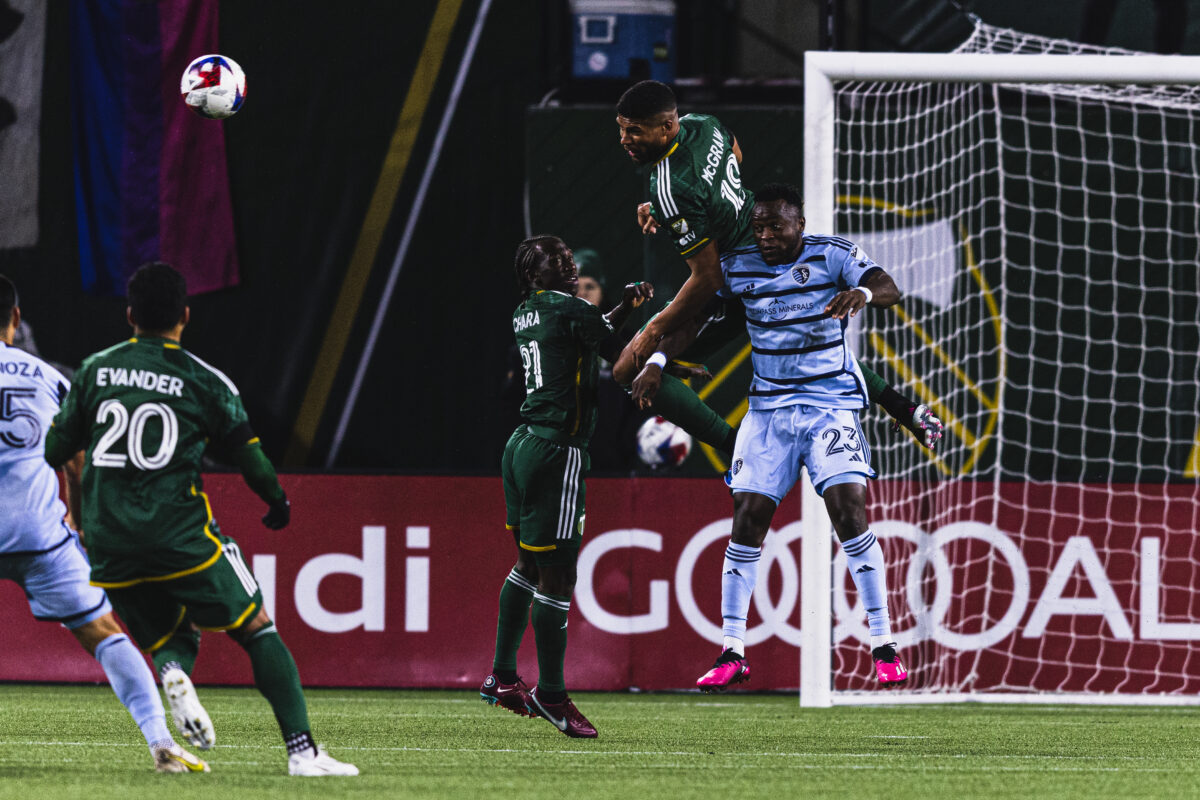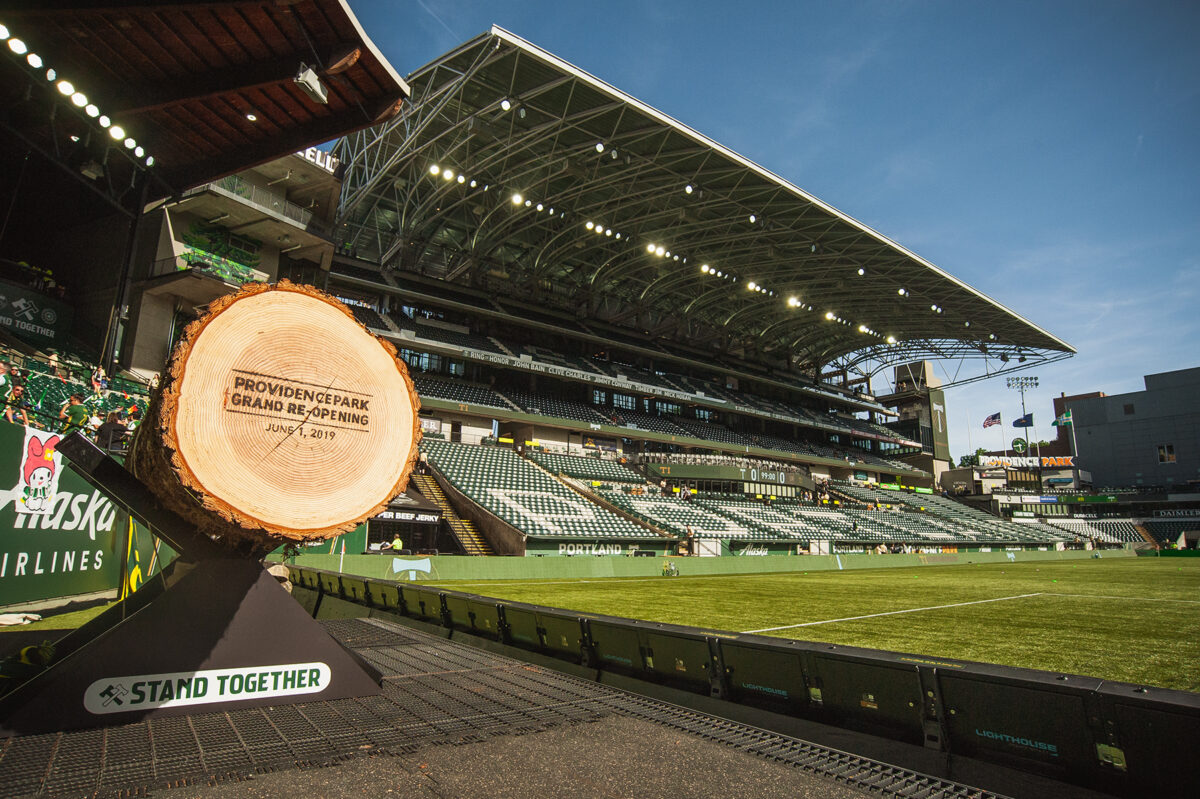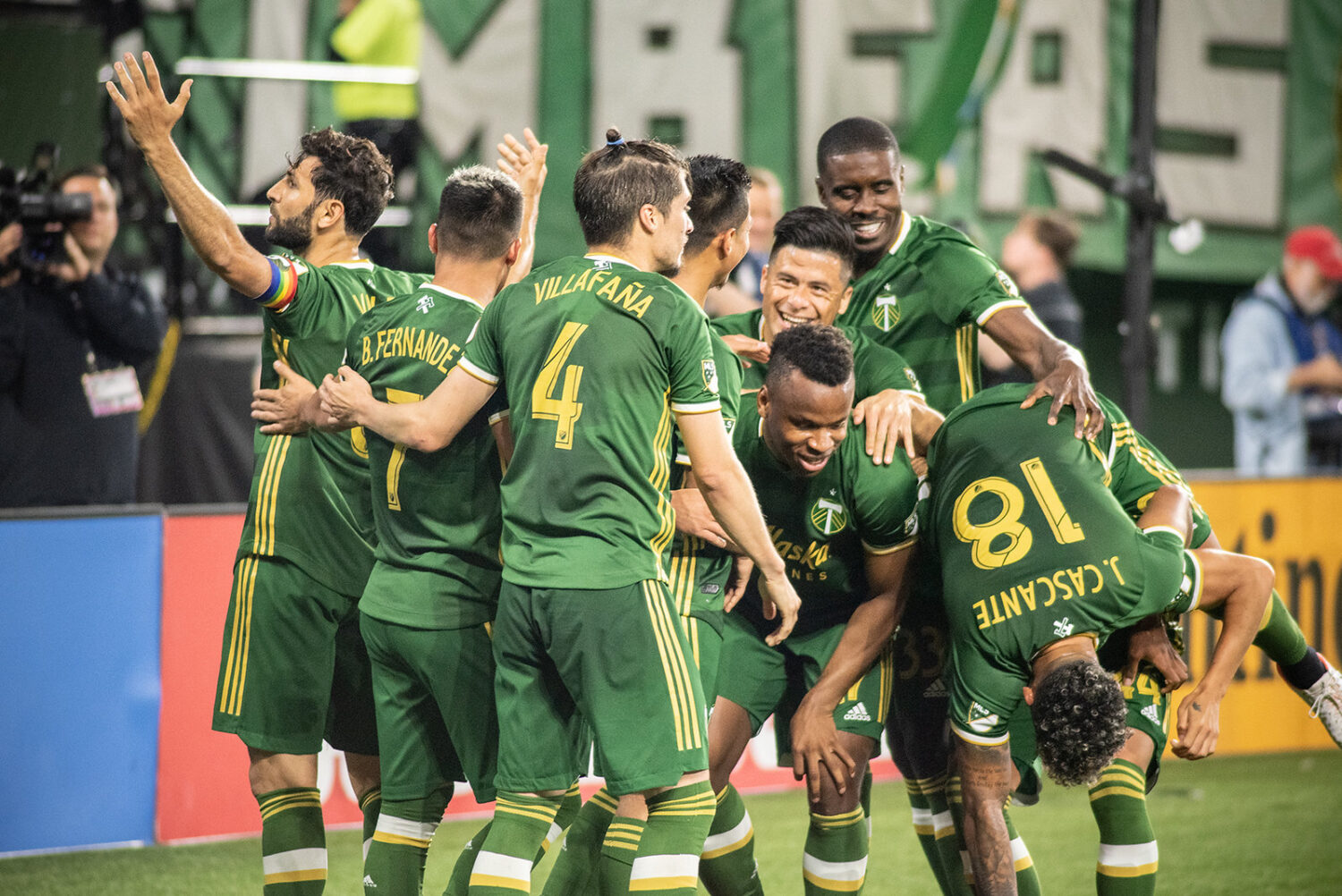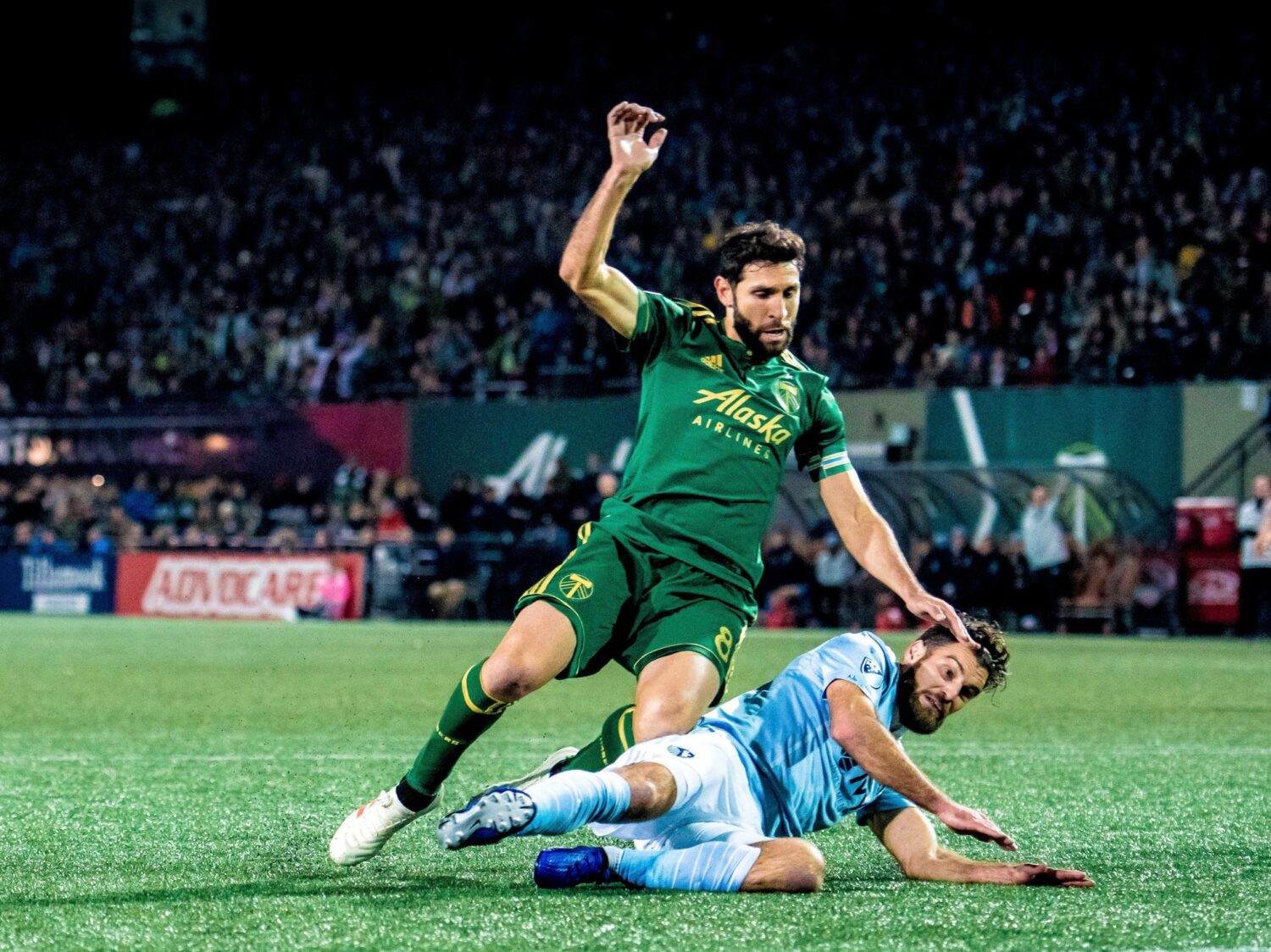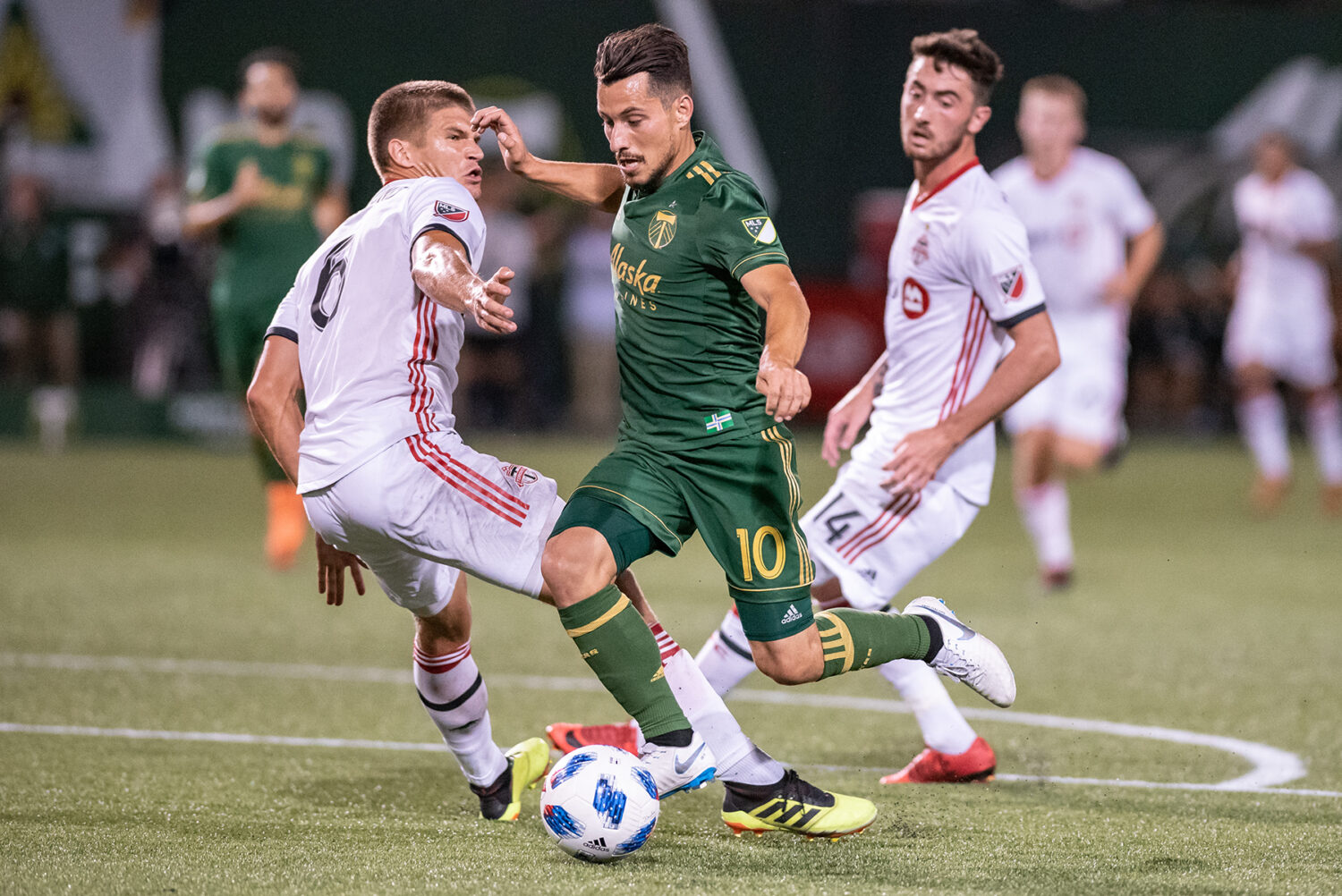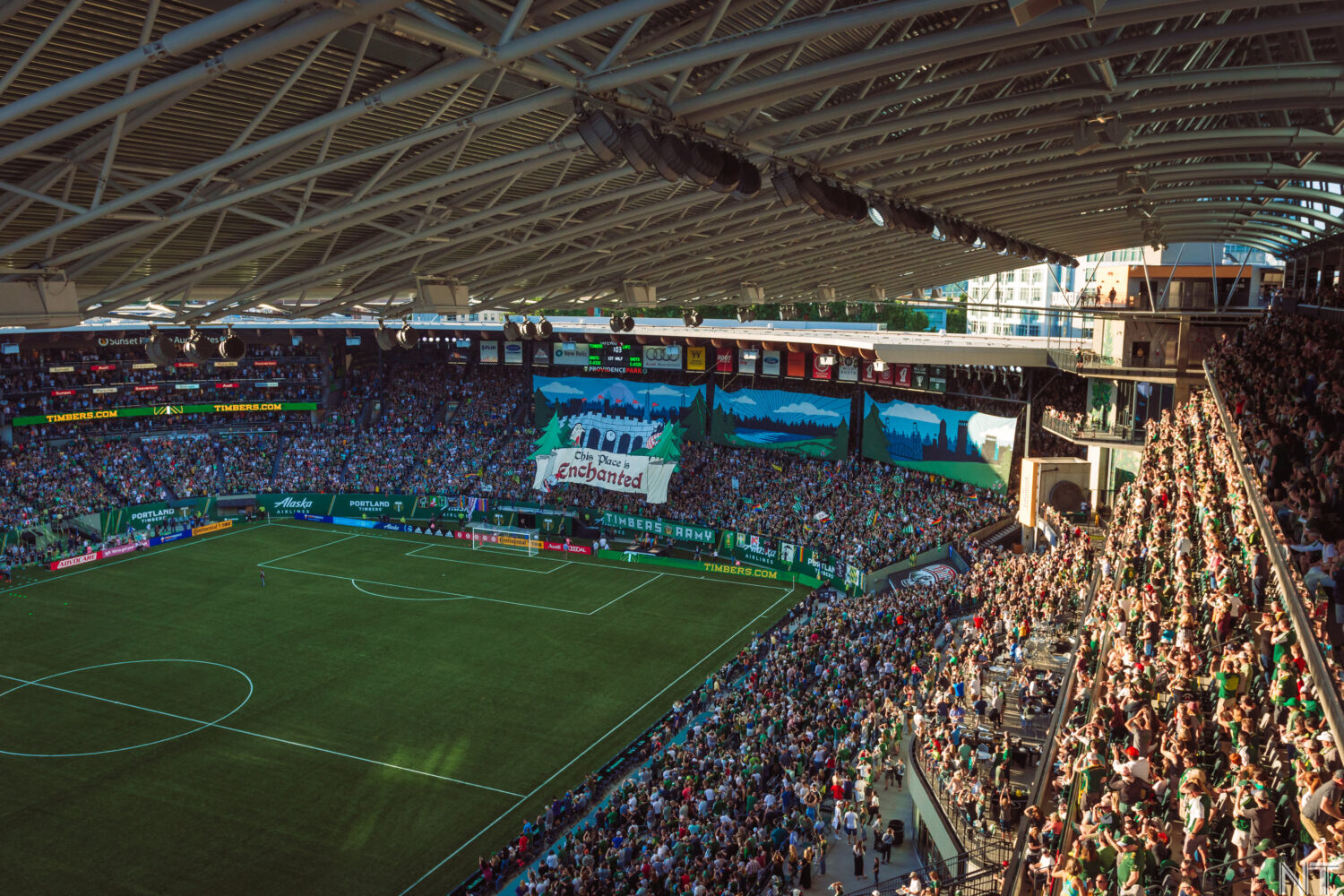After a snow-delayed start to their 2023 season, the Portland Timbers escaped with a 1-0 regular season opener win Monday night against a talented Sporting Kansas City side.
The match was the first season opening win under Portland head coach Gio Savarese and team’s first since 2017.
The victory came at the foot of right back Juan David Mosquera, who tallied the lone goal of the match in the sixth minute.
The score does not tell the entire story. This game proved it more than others.
Brr, It’s Cold in Here!
The originally scheduled home opener was postponed due to the snow storm. Instead of a weekend opener, the Portland Timbers hosted Sporting KC for Monday Night Football.
Thankfully, the Portland staff and crew made sure the field was cleared and the game was playable. We owe them all a huge round of applause and our gratitude.
Working tirelessly for Monday…⛄️#RCTID pic.twitter.com/PaWj6ojdHv
— Portland Timbers (@TimbersFC) February 27, 2023
The More Things Stay the Same, the More They Change?
Heading into the season, the Timbers returned primarily the same roster they had in 2022, with only three new starters on opening day. Evander, the highest paid transfer in team history at $10 million, was tasked with combining with midfield stars Eryk Williamson and Diego Chará to hopefully return Portland’s unit to elite status. The other two changes came in defense: After trading center back Bill Tuiloma and moving on from right back José Van Rankin, rising star center back Zac McGraw and last season’s transfer Mosquera are now starters. They are hoping to improve a backline that gave up the 11th-most goals in MLS in 2022.
Elite Midfield? Not just yet, but soon.
When El Maestro, Diego Valeri, departed from the Timbers before the 2022 season, he left a legacy in the center of the pitch. Evander has been hyped as the team’s next magician in midfield.
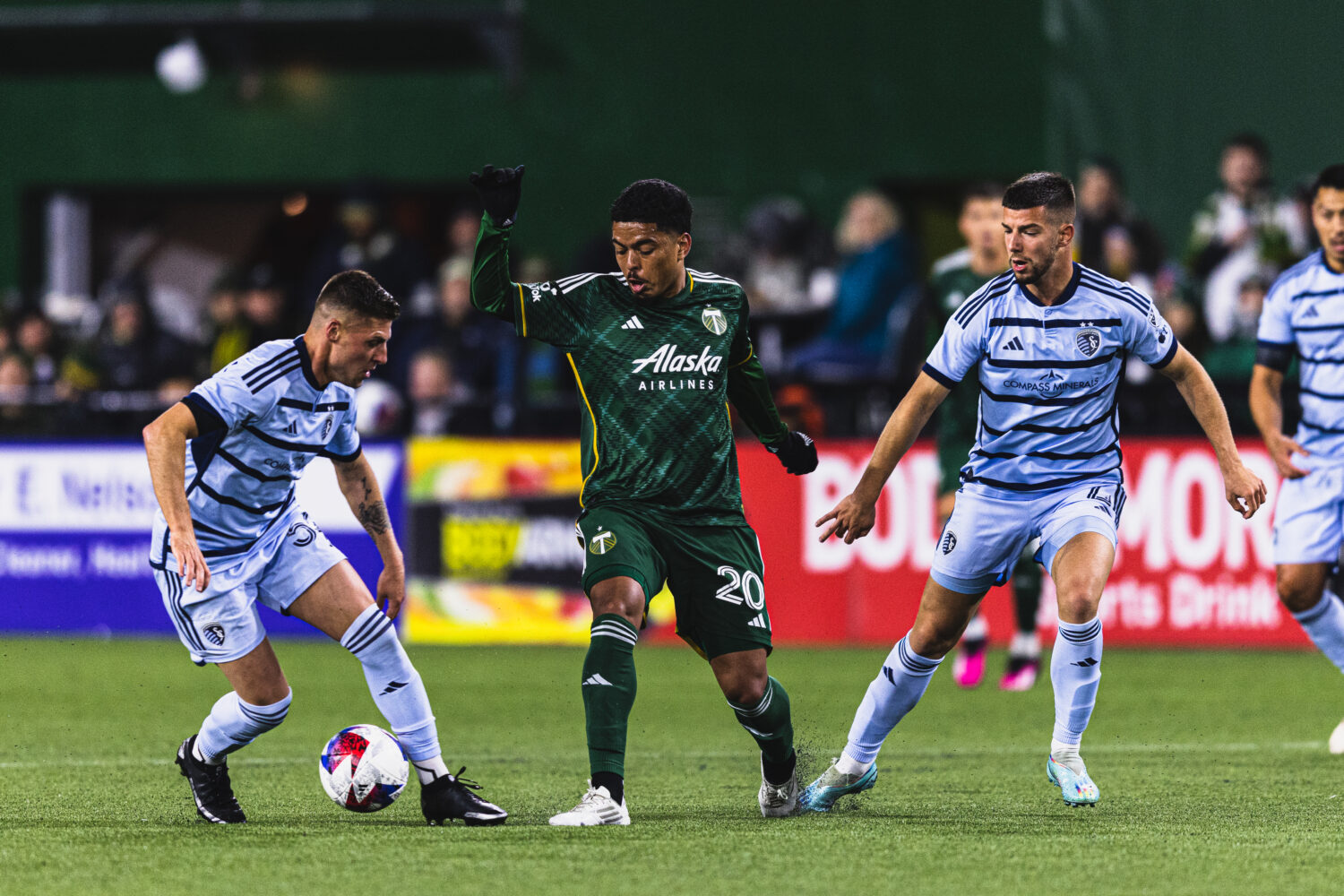
His debut was tough sledding. Evander was not able to get into a rhythm, and it showed. However, he put energy into his defending. His commitment to that end should excite everyone. Even if the game is unable to find him, he’s shown a commitment to being a difference maker.
If this is an “off game,” he still led the team in duels, dribbles, successful dribbles, and possession won.
Savarese described Evander’s night as “a performance of a player that just arrived in a new league, a performance of a player that, at the beginning, was finding and looking to try to be involved in the game.”
Savarese said Evander found “really special moments” in the game’s second half, even if they didn’t all go Portland’s way. “But I think for me, the most important thing is how much he ran for the team,” Savarese said, “how much he put work to make sure that we got a win. And for me, that’s so important […] He has those moments, and he’ll be able to provide it the more he’s going to adapt, the more that he’s going to play, the fitter he’s going to get. But he ran for the team today, and that is something you feel is very important from a player of his caliber. Very proud of him, very proud of the group. I’m excited for what is coming in the future from him.”
Williamson is at his best when he has the freedom to sit next to Chará and roam all the way up next to Jarosław Niezgoda. In the first 15 minutes, he was able to do that.
Once Sporting KC made a commitment to press and look for the equalizer, Portland’s entire XI was pinned back defending. Williamson was phenomenal on the ball and was one of the only players who seemed comfortable playmaking and beating the press.
Chará is the most consistent No. 6 in MLS, and he brought it on the defensive end. He led the team in interceptions, blocks, and tackles won, reliable as ever in the opener.
Just one game in, it’s clear the midfield of Evander, Williamson, and Chará is going to improve with more time to build chemistry and rapport. They are going to be the key to Portland’s season this year.
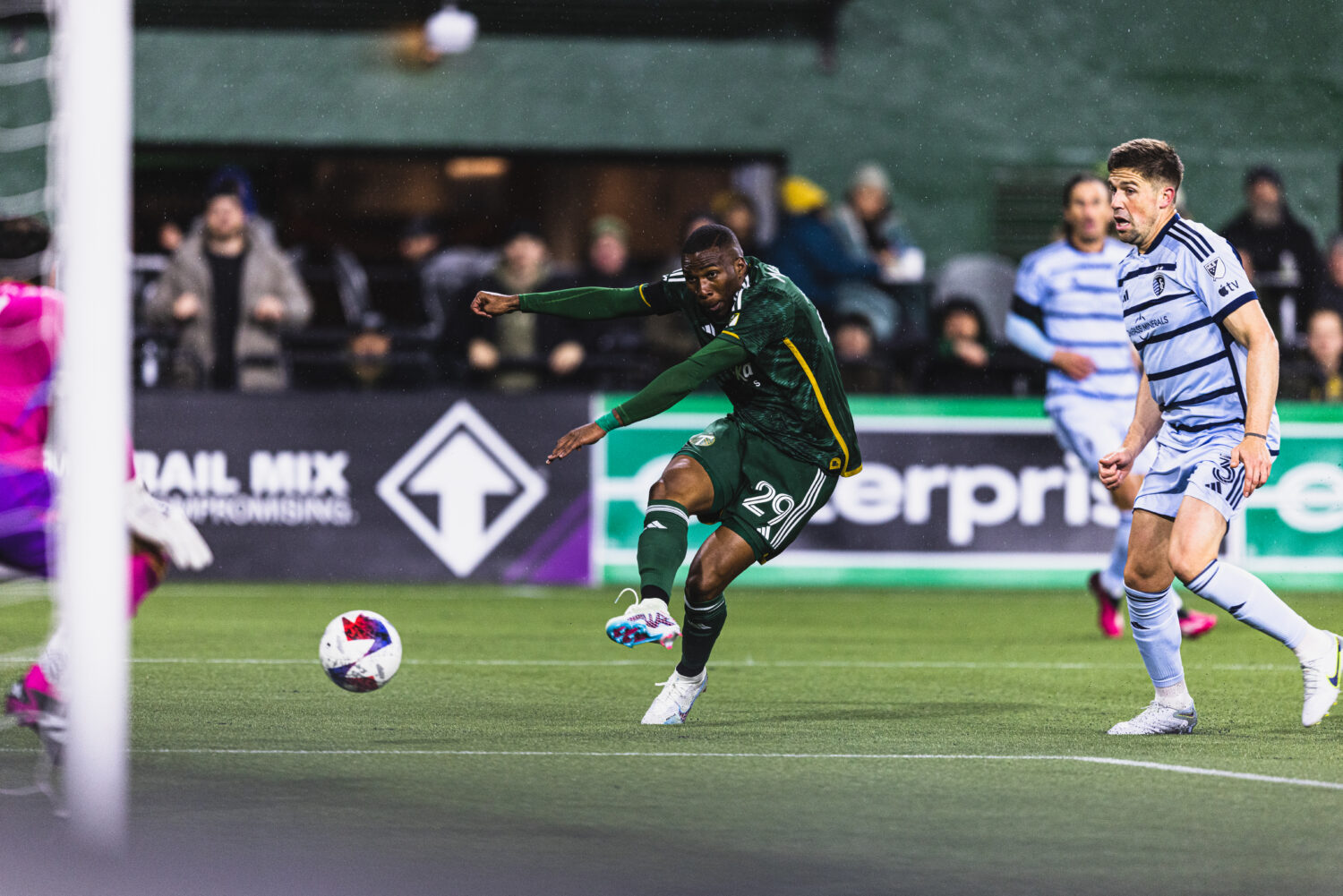
Where Will the Goals Come From?
Last year proved that the Timbers can rely on every single player on the team to score goals. This game was no different. If the Timbers are going to be a top team in MLS—as is their hope—everyone will need to contribute.
The game’s only goal belonged to Juan David Mosquera.
“It was a great feeling to be able to help the team,” Mosquera said after the match,” because of course with the goal we were able to get the first three points of the year. I just hope to keep going that way. To me, the most important thing is to be able to help the team.”
Next week at LAFC, it most likely will be another hero.
Yimmi Chara –> Juan Mosquera
That Colombian connection has @TimbersFC ahead early. 🇨🇴 pic.twitter.com/vEWWTPGi2G
— Major League Soccer (@MLS) February 28, 2023
Don’t be surprised if the team has a bunch of 5+ goal scorers this year. This team will be one that has a goals-by-committee approach.
How Did the Backline Look?
Portland’s defense was missing Claudio Bravo, who was brave going forward and a willing defender in 2022. He is one of the best left backs in MLS—a tall order for the Timbers to replace this game.
Bravo had a career year in 2022, when he led the team in tackles won with 77. He also paced the Timbers last season in interceptions, touches, and duels won.
Only one issue: He is still not 100%.
Justin Rasmussen was inserted in the starting XI in place of Bravo, and it didn’t go so well.
Rasmussen, bless his heart, is having a rough go against Shelton and Salloi tonight. #RCTID
— Stumptown Footy (@StumptownFooty) February 28, 2023
Fresh off appearances for the Colombian National Team, Mosquera was ready to make the right back position his this season. After only making three appearances—and two starts—for the Timbers in 2022, he was determined to make the most of the opening day start for the club.
Mosquera took almost no time to make his mark. Known for his attacking prowess from the fullback position, Mosquera lived up to the hype. In the sixth minute, he scored his first career goal for Portland.
After a shaky start—including a a yellow card in the 26th minute—Dario Župarić was clinical. He came up huge when his name was called upon. At one point, Župarić even dove head first to snuff an attack and paid the price. Amazingly, he stayed in the game and battled the rest of the evening.
David Bingham was solid and came up clutch throughout the game. He had a crucial double save in the 24th minute, which would set the tone the rest of the night.
Zac McGraw was excellent in defense: numerous chances denied, hit solid passes, and great marking. Every time Sporting KC got close to scoring, McGraw was ready. There isn’t a center back in the MLS with more upside. With former Timbers legend and current coach Liam Ridgewell by his side, he is poised to have a career year.
And starting off the season by holding Kansas City scoreless is right in line with that trajectory.
“That’s what you take pride in,” McGraw said of the Timbers’ clean sheet. “Try to limit shots, limit their shots on goal, at the end of the day get a shut out. Because if you get a shutout, we did our job, so it’s up to the offense to take care of their job. Obviously Mosquera, a defender, made that goal so just all-around good performance from the defensive line.”
This backline is going to improve immensely this season and it’ll get even better with the return of Bravo in a few weeks. The early signs are encouraging and exciting.
The Impact of an Incomplete Starting XI
Timbers XI just dropped 👇
▪️ @OficialEvander debut 👏
▪️ @BinghamDb in goal 🖐️
▪️ @DiegoChara21 with the armband ©️#RCTID pic.twitter.com/nUWJeAtkRo— Portland Timbers (@TimbersFC) February 28, 2023
The Portland Timbers played without starting left back Claudio Bravo and goalkeeper Aljaž Ivačič ,while Santiago Moreno also started on the bench.
The team did not have a full complement of first team players, and it showed for stretches of the game. Portland had a lot of bad giveaways, sloppy passes, and misconnections.
Sporting KC dominated possession by 58% to 42%. Their press wreaked havoc on the Timbers’ attack. If we’re being completely honest, they were the better side. Kansas City were very unlucky not to get a result.
“We were all over [Portland] in the second half,” Sporting KC head coach Peter Vermes said. “We created some good chances in the first half, as well as the second half. We couldn’t find it, but the effort, the desire, the passion, everything was there in the game. Other than the mistake on the first goal, I thought we had it. Outside of that, the team played well.”
The frontline duo of Marvin Loría, Niezgoda, and Yimmi Chará seemed out of touch and off their games. However, Loría’s work rate was phenomenal, and he still put in a fantastic shift.
Niezgoda’s conversion rate plummeted in 2022, and the early hopes of a rebound season do not look good. He got in good positions, but the first touch let him down all game. Y. Chará assisted on Mosquera’s goal and was subbed off later on with an apparent hamstring injury. Savarese said it will be weeks before he returns.
Santi Moreno checked in for Y. Chará in the 33rd minute.
The midfield of Evander, Williamson, and D. Chará looked exceptional for the first 15 minutes but had to focus on covering defensively for the remainder of the game. They had moments, but moving forward they’ll need to more. Portland will need to play on the front foot and counterattack more often if they want to take advantage of their midfield.
We must give credit where it’s due, to the Portland Timbers defense, especially from the backline. The entire team put in massive amount of effort to make sure the score ended in their favor. Many of the standouts were on that backline.
Standouts: Stock up!
Player of the Match: Zac McGraw
McGraw has all the talent in the world and led the the backline to a shutout of Sporting KC side who did everything they could to get a result at Providence Park.
He put on a masterclass at center back and led the team with six aerial duels won and two blocks and was second with four tackles.
The best center back I’ve ever played with coaching the man who has unlimited potential. Things you love to see. pic.twitter.com/WrpPacBycj
— Jeff Attinella (@JeffAttinella) February 28, 2023
Juan David Mosquera:
What a game by JDM!
He led the team in touches, goals, tackles, and tackles won. Don’t be surprised if Europe comes calling sooner rather than later.
Juan David Mosquera is in for a breakout year and, sooner rather than later, a lucrative transfer to Europe. Clubs have already come to Portland for the Colombian right back. Big talent.
— Tom Bogert (@tombogert) February 28, 2023
David Bingham:
After starting in place of star goalkeeper Aljaž Ivačič, Bingham absolutely came up clutch and commanded his backline well.
He came up with four huge saves to preserve the clean sheet.
Eryk Williamson:
There are no players in MLS who can do what Williamson does. The USMNT is calling because of his ability to play world class soccer. He led the midfield in passing accuracy and chances created, which should be a common occurrence this season.
Santi Moreno:
Even though he didn’t start, Moreno came on and made a difference.
He led the team in chances created and passes in the final third. He also contributed three successful dribbles, two tackles, and eight possessions won.
Just another day at the office for him.
Head coach Gio Savarese:
Savarese is now the winningest head coach in club history with 69 victories. He continues to find ways to win with this club each season. Congrats to Gio!
Here's Gio Savarese's on becoming the winningest coach in Timbers history:
"When it's for an organization that you care so much, for fans that you care so much, you feel proud… I was told right after the game. I didn't know that was the case. I was thrilled and happy." https://t.co/Y3gjpPNfcT pic.twitter.com/7iqhPLc3Ru
— Brenna Greene (@BrennaGreene_) February 28, 2023

